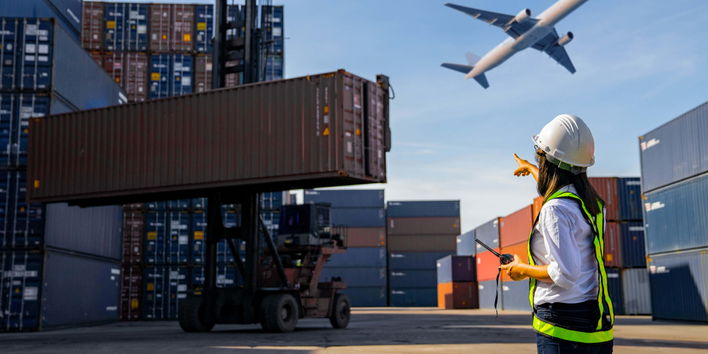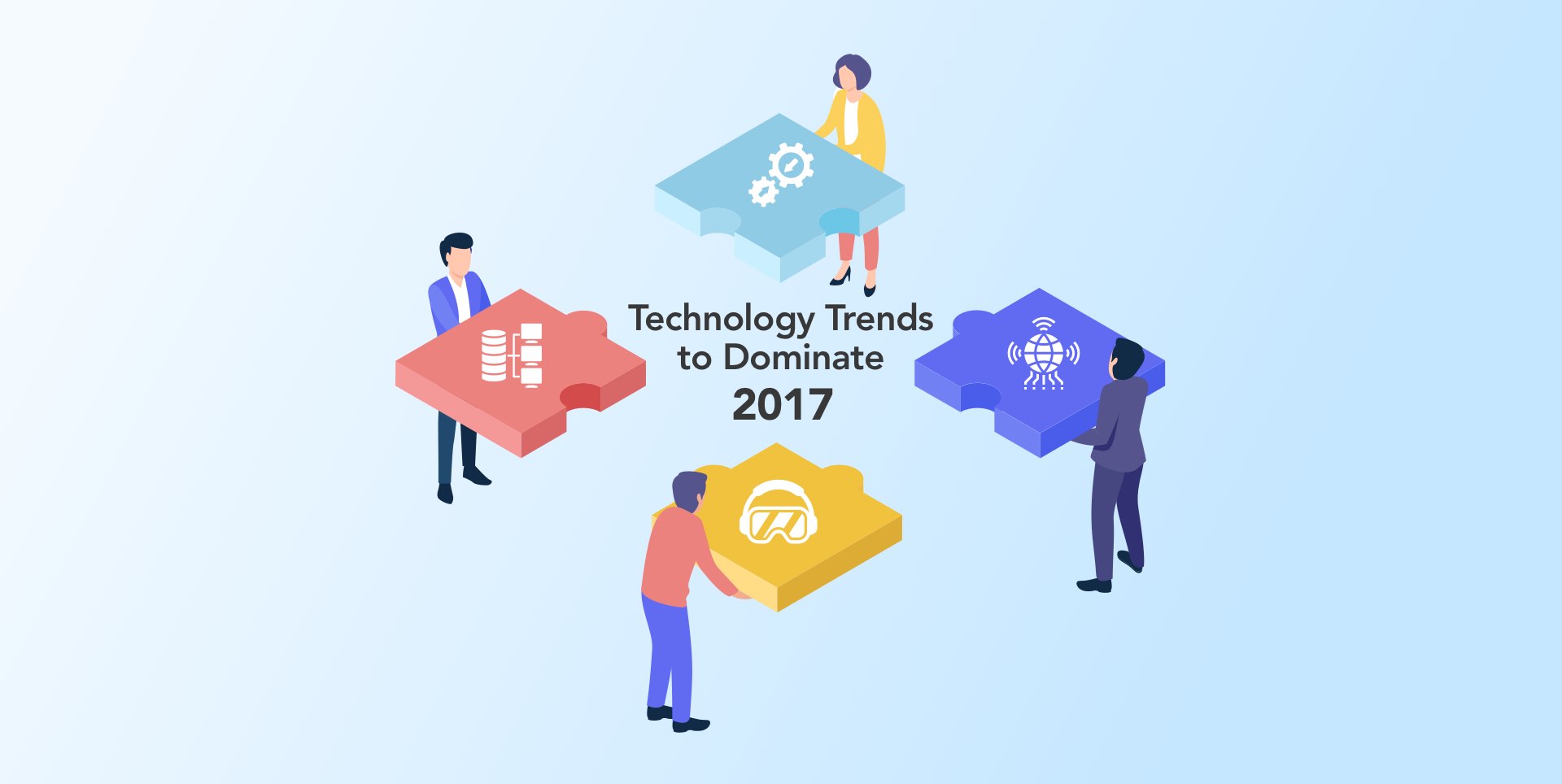- Trends
- 7 min read
- June 2021
Top Logistics and Supply Chain Trends
Rising technological innovations have left no sector untouched; from the healthcare sector to logistics and supply chain, every industry has seen a massive digital transformation.
Enhancing mobility and increasing productivity have become the two primary goals of every logistics company. The entry of new technologies like artificial intelligence, analytics, and automation has made massive advancements in this industry.
The global retail logistics market size was estimated at USD 227.61 billion in 2021 and is expected to reach USD 252.37 billion in 2022 - Grand View Research
Logistics is considered one of the most critical pillars of every successful business, as it helps enterprises seamlessly deliver their end products to customers.
It is a phenomenal industry that provides a broad range of services, including
- supply chain management
- sourcing of goods
- supply chain transformation
- manufacturing
- inventory
- handling
- transportation
- storage/warehousing
- and delivering goods via B2B, B2C, or C2C supply chain networks
If we take a look at the logistics market size, the statistics are enormous.
Logistics industry market size
The logistics industry is considered the backbone of international trade. According to Statista, it was worth over 5.5 trillion euros in 2018. In 2020, the contract logistics market was sized at around 219.1 billion euros and is expected to reach 280.8 billion euros by 2025.
These statistics justify how big and tremendous the logistics industry is.
Due to the pandemic, consumers are turning to online shopping, which leads to a sudden increase in delivery demands. This puts the logistics and supply chain industry under immense pressure.
To cope with such rising markets, the logistics sector has stepped into the world of technological advancements and introduced logistics technological solutions. Today, from intelligent warehouse management to last-mile delivery solutions, this industry has evolved and brought notable trends for 2022.
This post will describe what innovative trends and technologies the logistics sector has opted for in digital transformation.
Top logistics trends to look for in 2022
Staying updated with the latest trends and efficiently implementing them in existing business operations helps logistics companies gain a competitive edge.
This section will cover the cutting-edge trends that will completely revamp the logistics and supply chain industry and provide immense opportunities for businesses to achieve revenue goals.
1. Big data analytics
Data Analytics is one of the best practices for enhancing warehouse productivity by providing actionable insights related to improvements, performance, and resource utilization.
The data analytics further supports companies in optimizing supplier pricing, managing inventory levels, and risk management reports. Organizations conduct this practice to ensure the smooth running of operations in a timely and cost-effective manner.
2. Internet of Things
The global Internet of Things (IoT) retail market is expected to grow to USD 35.5 billion by 2025 at a Compound Annual Growth Rate (CAGR) of 19.6% during the forecast period.
Logistics companies now understand the importance of upgrading their existing supply chain environment with evolving technologies like IoT.
Companies that migrated to modern solutions before this pandemic are better positioned to manage their logistics and supply chain operations.
Implementing IoT in logistics provides businesses with enhanced visibility of the complete supply chain process and greatly improves inventory management efficiency.
IoT allows companies to get real-time information about their goods, monitor conditions, track the shipment process, track goods from the factory floor, and more.
The potential of using IoT in logistics and supply chains helps companies to keep their partners, customers, and workforce on the same page.
3. Last-mile delivery
Last-mile delivery systems are among the trending logistics and supply chain sectors. They refer to the movement of goods from the source to the final delivery destination. eCommerce businesses prefer this approach to automating their delivery process.
The last-mile delivery systems come with IoT, beacons, and Bluetooth that help companies stay aligned with their deliveries and offer better customer experiences to their end-users.
This system contains the complete order details and notifies both the sender and receiver of the orders. The last-mile delivery system approach starts when the order arrives at the transportation hub and is ready to move to the final location.
Drones are the best examples of last-mile delivery systems currently being used at a few locations around the United States.
4. Artificial intelligence
Artificial intelligence (AI) is a popular technology that makes every sector more innovative and resilient. The global supply chain AI market is projected to reach $13.5 billion by 2026.
Supply chain automation must be paired with artificial intelligence to be truly effective. AI provides the necessary power for technologies such as digital workers, warehouse robots, and autonomous vehicles to carry out repetitive tasks without making errors.
AI may also aid automation in a supply chain. Amazon, Tusimple, and Nuro are firms investing heavily in transport automation technologies such as self-driving vehicles.
Warehouse automation is another way AI is used in supply chain management. Technologies like cobots, which AI powers, are helping to improve efficiency, productivity, and safety in warehouse management. Ocado is one of the primary market players in warehouse automation.
5. Robotics
The global logistics robots market is expected to reach USD 14.93 Billion in 2027. Robotics is becoming increasingly popular for reducing distribution center costs in the logistics and supply chain sectors.
The use of robots aids logistics companies in improving operational efficiency, reducing stock shortages, and lowering administrative errors. After implementing robotics in its business operations, Amazon reduced operational costs by 20%.
6. Digital twins
Digital twins are one of the most exciting logistics trends for the year 2022. We all know that items on the Internet never appear the same as they are shown on the Internet. Many 3D modeling techniques ignore how components wear down and must be replaced, but this is slowly changing.
Now, the physical and digital realms may be blended, allowing users to interact with a digital model of a real product or component the same way they would with its exact counterparts.
A digital twin is a computer-generated replica of your supply chain that consists of assets, warehouses, logistics, and inventory positions.
Using analytical data and artificial intelligence, the digital twin can predict the future performance of your supply chain by simulating different scenarios, including risks. Analysts can use this information to learn about a supply chain's activity, anticipate unusual events, and devise a suitable strategy.
7. Cloud computing
The cloud SCM market was valued at $3.3 billion in 2016. It is predicted to advance at a CAGR of 19.2% (2017–2023). The logistics and supply chain industry is seeing many significant changes thanks to cloud computing.
Cloud services help improve business-partner interaction, efficient inventory management, data security, and disaster recovery.
By communicating and collaborating via a secure cloud-based system, supply chain and logistics companies can avoid high costs while maintaining efficiency and transparency.
Because of these factors, logistics firms have turned their attention to the cloud and implemented it in their regular business operations.
Cloud computing is making life easier for logistics service providers. The logistics industry requires daily interactions between stakeholders to keep things running smoothly. Cloud computing enables cost-effective connections between many partners throughout the supply chain, making everyone's life a little easier.
8. Blockchain
The post-COVID-19 global blockchain supply chain market size is expected to grow from USD 253 million in 2020 to USD 3,272 million by 2026 at a Compound Annual Growth Rate (CAGR) of 53.2% during the forecast period, fueling the demand and lucrative opportunities for the vendors using this technology.
The blockchain is an open and secure technology that maintains a log of the whole supply chain's transactions.
It can act as a digital ledger, allowing different networks to share crucial information without fearing being exposed or damaged. Still, companies must be able to gather and arrange their data properly.
Furthermore, companies will have to cultivate a network of supply chain partners to utilize the blockchain once the industry forges new standards.
Blockchain technology in the logistics and supply chain allows companies to maintain a distributed and decentralized ledger that minimizes paperwork errors and records shipping containers.
Concluding thoughts: Businesses are already reshaping their supply chain processes. What's stopping you?
Technological advancements are providing a much-needed boost to the logistics and supply chain industry, which has struggled in recent years due to customers' changing demands.
Technologies like IoT, AI, RPA, and Blockchain can significantly help companies overcome these challenges and deliver a seamless experience to end customers.
With technological advancements growing at an alarming rate, companies must act now and adopt digital transformation quickly to gain a competitive advantage.
If you are also from the logistics industry and looking for ways to enter the technological world, we can help you. Here is a curated resource from our experts on the supply chain and manufacturing trends for 2022.
What’s Inside
- 1. Big data analytics
- 2. Internet of Things
- 3. Last-mile delivery
- A 2022 Digital Guide to the Global Supply Chain Crisis
- 4. Artificial intelligence
- 5. Robotics
- 6. Digital twins
- 7. Cloud computing
- 8. Blockchain
- Concluding thoughts: Businesses are already reshaping their supply chain processes. What's stopping you?




